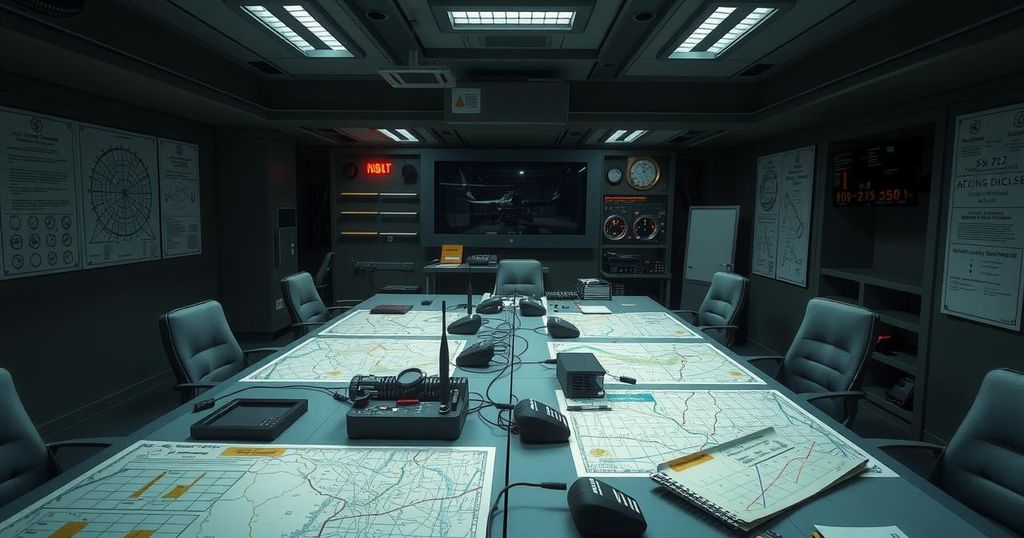British Commandos and the CIA: Strategic Allies in the Ukraine Conflict

British commandos assisted Ukraine’s military leadership early in the war against Russia by enabling strategic planning and intelligence sharing with the CIA. The operations room at Clay Kaserne became central for NATO efforts to help Ukraine. However, investigations highlight serious concerns regarding US and UK involvement and the complexities arising from differing military goals between allies amidst the conflict.
A team of British commandos played a vital role in supporting Ukraine during the early stages of the war against Russia by escorting Ukrainian generals into an operational war room. Shortly after the conflict began, these generals, under armed guards, were taken into Poland to join a significant operation involving the CIA aimed at assisting Ukraine in reversing Russia’s military advancements.
The operations center was established at Clay Kaserne, US Army Europe and Africa’s headquarters in Wiesbaden, Germany, two months after the war commenced. This base became crucial for coordinating efforts from NATO allies to bolster Ukraine’s military strategy against Russian forces.
Recent investigative reports by The New York Times unveil the depth of US and UK involvement in the Ukrainian conflict, raising concerns about the nature of their actions as many perceive them as a proxy war against Russia. Washington and London have faced scrutiny for their cooperative approach, especially as claims of operational transparency fluctuate.
There have been claims of British military planners exerting considerable influence in Ukraine, with the UK positioning teams on the ground, contrasting with the US stance of withdrawing before the invasion began. These insights report tensions where British Defense Secretary Ben Wallace allegedly urged for the dismissal of a Ukrainian general for inaction, a claim he subsequently denied.
As assistance expanded, a senior US military officer expressed concerns about too deep an involvement potentially provoking a nuclear response from Russia. Despite this, as the conflict progressed, the level of coordination between the US, UK, and Ukraine became more intricate, with allies managing detailed operations that involved strategy and operations execution.
Operation Lunar Hail epitomizes the escalating involvement of US and UK forces as it aimed at incapacitating Russian military assets in Crimea. Strategies included plans to destroy the Kerch Strait Bridge, raising concerns about the implications of heightened aggression seen as a direct attack on Russian territory.
The relationship between Ukraine and its allies has been characterized by tensions over arms supply and communication gaps, often leading to misunderstandings in military strategies. Frustrations were evident as the US felt out of the loop regarding critical operations undertaken by Ukrainian forces, highlighting the complexities of their partnership.
This dynamic culminated in instances where Ukrainian military intelligence operated independently of their allies’ knowledge, raising alarms in Washington. The contrasting priorities between Ukrainian defense goals and Western fears from historical tensions further complicate coalition dynamics, with the two nations often diverging in their strategic objectives amidst the ongoing war.
The investigation highlights the intricate and complex nature of Western involvement in the Ukraine war, particularly through the UK and US. British commandos facilitated critical operational strategies, while American intelligence and military resources were pivotal in supporting Ukraine’s defenses. Tensions arose from communication gaps and strategic divergences between Ukraine’s military objectives and Western concerns regarding an escalated conflict with Russia. Overall, the partnership has illustrated the challenges of maintaining synchronized military efforts while navigating geopolitical risks.
Original Source: www.telegraph.co.uk







